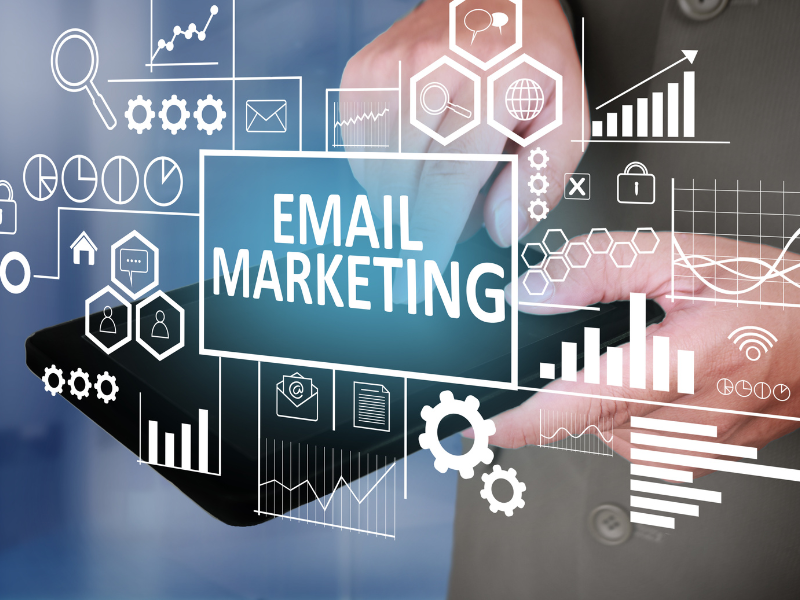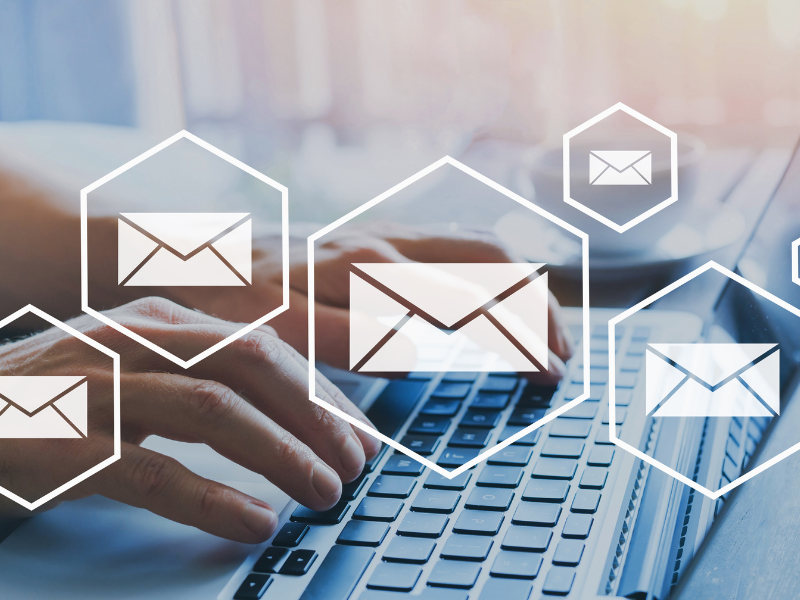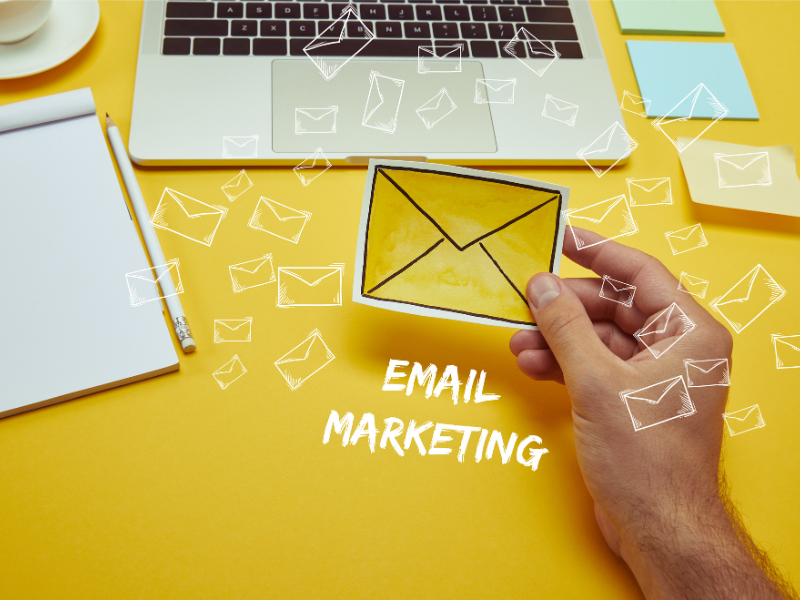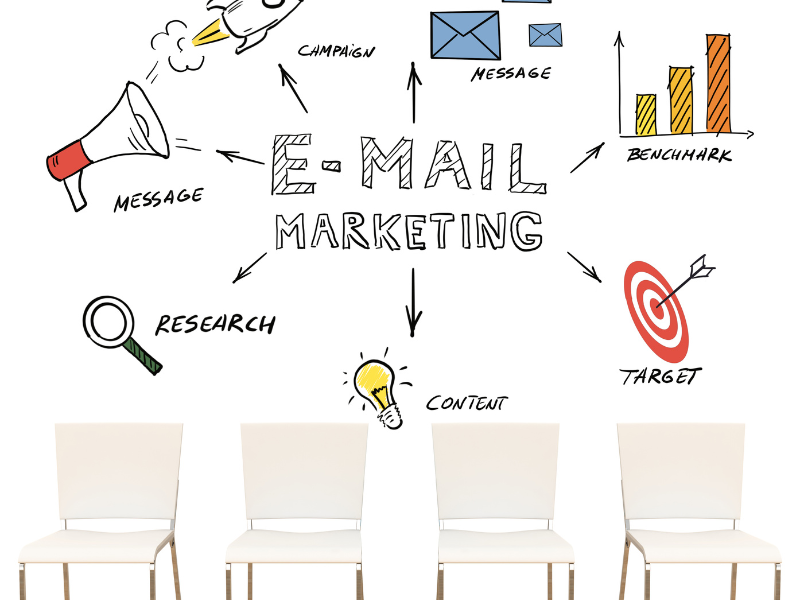
Email marketing software can be a powerful tool for small businesses. It can drive traffic to your website, increase sales, build brand loyalty, and more. And the software is even more powerful if you take full advantage of the tools available to you.
Of course, every email marketing software provider offers a unique platform, but they all provide similar fundamental functions that will help your business either a little or a lot. How much is up to you.
Many email marketers believe they’re using email marketing software to its full potential. They’re designing aesthetically appealing emails, providing valuable content, and seeing acceptable results. However, results could be better than acceptable, and small business email marketers often don’t realize it.
3 Email Marketing Questions to Ask Yourself
If your small business is running email marketing campaigns through a software provider, and you’re not sure you’re making the most of that investment, consider the following questions.
These three questions will help you discover new ways to maximize your email marketing software, and hopefully, improve your email marketing results.

1. Are You Analyzing Your Data?
In this era of “Big Data,” most email marketing software providers offer at least some form of numerical feedback. When you send an email, you generally get data on who opened the email, who clicked, what they clicked, who opted out, who marked the email as spam, and who, if anyone, forwarded your email. Every email blast generates a treasure trove of information about subscribers.
Despite the availability of this valuable data, small businesses often ignore its potential. You may send out an email and check its results, thinking that means you’re taking advantage of your software’s data reporting features. In reality, if that’s all you’re doing with all that data, you’re just touching the tip of the iceberg.
Email marketing data is most valuable when you use it to learn about your subscribers and adjust your strategy according to your conclusions. You could, for example, keep track of which content topics generate the most clicks, and then use those topics more often.
Depending on your software provider, this tactic may have a learning curve and require time spent on initial implementation. But once you discover what your subscribers really like, your email marketing campaigns will never be the same.
2. Is Social Sharing Integrated Into Your Marketing Emails?
There are two key ways to integrate social media into your marketing emails. One is fairly standard – including links to your company’s social profiles in each email. If you’re not already doing this, start now.
The second tactic isn’t always given the recognition it deserves. That tactic is social sharing. When it comes to marketing emails, taking advantage of social sharing means giving your subscribers a way to easily, immediately post your email content to a social network. You can either allow recipients to share specific pieces of the email (pin a photo to Pinterest, for example), or you can allow them to share the entire email (or both). Both are useful.
Because social sharing requires very little time to implement in your email marketing campaigns, this is one software tool your small business can’t afford not to take advantage of. According to a study by BlueHornet:
“37% of consumers share emails to their social networks.”
And furthermore, a study by GetResponse found that emails with social sharing buttons achieve click-through rates 158% higher than those without them.

3. Are You A/B Testing?
The more you test and tweak different email components, the more your campaign will resonate with customers. Although single-version email blasts already generate useful data, you can produce more precisely actionable data by A/B testing emails with multiple versions.
Unfortunately, some major email marketing providers don’t make A/B testing easy. Constant Contact, for example, has yet to integrate any type of automated A/B testing tool into its software platform, so users have to create completely separate emails and subscriber lists in order to run tests. If your small business uses this type of email marketing software, you may find testing to be a burden, but it’s definitely useful if you have the time.
Luckily, email platforms with built-in split test tools do exist. GetResponse, for example, offers an integrated A/B testing tool that lets users create an email, choose an element to test in two versions, and automatically send out both versions to custom percentages of an email list. You can set both versions of an email to gradually go out to selected percentages (i.e. 50/50), and then as results come in, the software automatically determines which version is performing better and sends that version to the remaining recipients on your list.
Running simple A/B tests like this through email marketing software can help you continually optimize your emails to improve results. Optimize subject lines, greetings, font colors, button colors, content organization, etc.
By taking advantage of these three neglected email marketing tools (or just one), your small business can increase the ROI of your software investment and improve your overall marketing strategy. And what you learn from email marketing might even benefit other marketing channels.
Mastering Email Marketing: Unleash the Power of Personalization
In the realm of digital marketing, email remains a potent tool for businesses to connect with their audience on a personalized level. The ability to tailor content and messages to individual recipients can significantly enhance the effectiveness of your email campaigns. Here’s how you can master the art of email marketing through the power of personalization:
- Segmentation for Precision
- Divide your email list into segments based on demographics, behavior, interests, and purchase history.
- Craft specific messages for each segment, addressing their unique needs and preferences.
- Segmentation allows you to send more relevant content, leading to higher engagement and conversions.
- Dynamic Content for Relevance
- Incorporate dynamic content that changes based on recipient data.
- Customize email content such as product recommendations, location-based offers, and tailored promotions.
- Dynamic content boosts engagement by delivering content that resonates with individual recipients.
- Personalized Subject Lines and Preheaders
- Use recipient’s name or location in subject lines for a personalized touch.
- Craft preheaders that complement the subject line and provide a preview of the email’s content.
- Personalized subject lines and preheaders entice recipients to open your emails.
- Behavioral Triggers for Timely Outreach
- Set up triggers based on recipient actions, such as abandoned carts or website visits.
- Automatically send targeted emails triggered by specific behaviors.
- Behavioral triggers capitalize on real-time actions, increasing the likelihood of conversions.
- Automation for Consistency
- Implement automated workflows for various stages of the customer journey.
- Send welcome emails, nurture sequences, and post-purchase follow-ups.
- Automation ensures consistent and timely communication without manual intervention.
- Dynamic Personalization Tokens
- Utilize merge tags to insert personalized information like names, purchase history, or location.
- Craft messages that directly address the recipient and make them feel valued.
- Dynamic personalization tokens create a one-on-one communication experience.
- Testing and Optimization for Perfection
- Continuously test different elements of your emails, such as subject lines, content, and CTAs.
- Analyze metrics like open rates, click-through rates, and conversion rates.
- Optimization based on test results refines your personalization strategy over time.
- Permission-based Marketing for Trust
- Obtain explicit consent before sending emails to ensure compliance with data privacy laws.
- Clearly communicate the value recipients will receive from your emails.
- Permission-based marketing builds trust and ensures engagement from genuinely interested recipients.
| Key Personalization Strategies | Description |
|---|---|
| Segmentation for Precision | Divide email list into segments based on demographics, behavior, interests, and purchase history. Craft segment-specific messages for higher engagement and conversions. |
| Dynamic Content for Relevance | Incorporate dynamic content that adapts based on recipient data. Customize content such as product recommendations and tailored promotions for individual engagement. |
| Personalized Subject Lines and Preheaders | Add recipient’s name or location to subject lines for a personalized touch. Craft preheaders that complement subject lines and entice recipients to open emails. |
| Behavioral Triggers for Timely Outreach | Set triggers based on recipient actions like abandoned carts or website visits. Send targeted emails triggered by specific behaviors for increased conversions. |
| Automation for Consistency | Implement automated workflows for different customer journey stages. Send welcome emails, nurture sequences, and post-purchase follow-ups for consistent communication. |
| Dynamic Personalization Tokens | Utilize merge tags to insert personalized information like names and purchase history. Create one-on-one communication by directly addressing recipients. |
| Testing and Optimization for Perfection | Continuously test email elements (subject lines, content, CTAs) and analyze metrics. Optimize strategy based on results for refined personalization. |
| Permission-based Marketing for Trust | Obtain explicit consent before sending emails to comply with data privacy laws. Communicate value to recipients and build trust for engagement. |
Personalization is more than just addressing recipients by their names; it’s about crafting meaningful interactions that resonate with individuals. By harnessing the power of personalization, your email campaigns can stand out in crowded inboxes and create lasting connections with your audience. Remember, each recipient is unique – make your emails reflect that uniqueness.

Conclusion: Elevate Your Email Marketing with Strategic Personalization
In the digital age, where communication channels are abundant and attention spans are fleeting, the significance of email marketing as a business tool remains steadfast. The potential it holds to drive website traffic, boost sales, and foster brand loyalty is undeniable. However, the true power of email marketing software lies in its utilization – a power that can be harnessed with precision and creativity.
As every email marketing software provider offers a distinct platform, it is important to recognize the fundamental functions they share. These functions form the bedrock of your campaigns, whether you’re looking to make a subtle impact or a monumental one. But often, businesses settle for acceptable results, not realizing that the uncharted territory of exceptional outcomes awaits their exploration.
Three pivotal questions can guide you toward unlocking the full potential of your email marketing endeavors. The first question prompts you to delve into your data, to mine it for insights that can shape your strategy. The era of “Big Data” presents a treasure trove of subscriber behavior, yet all too often, this potential remains untapped. The ability to track clicks, opens, opt-outs, and more serves as a wellspring of knowledge about your audience. However, true mastery lies in using this data to tailor your content, leading to a profound transformation in your campaigns.
The second question invites you to venture into the realm of social sharing. While providing links to your social profiles within emails is standard practice, the often-overlooked potential of social sharing lies in allowing recipients to disseminate your content across their networks. This seemingly small step can yield remarkable results, with studies indicating a significant increase in click-through rates for emails with social sharing buttons. As the digital landscape thrives on interconnectedness, this tool is invaluable for extending your reach and amplifying your message.
Finally, the third question champions the essence of refinement through testing – the concept of A/B testing. This technique involves creating multiple versions of your email, subtly altering elements such as subject lines, content layout, or colors. These variations are then sent to different segments of your audience, enabling you to gather invaluable data on what resonates best. The challenge lies in the execution, as not all email marketing platforms offer integrated A/B testing tools. Yet, those that do can empower you to optimize subject lines, greetings, font colors, button placements, and more, enhancing your campaign’s effectiveness.

With the amalgamation of strategic data analysis, social sharing, and meticulous A/B testing, you set the stage for elevating your email marketing strategy to unprecedented heights. Beyond these three questions, the guide also delves into the realm of mastering email marketing through personalization. Dividing your email list into segments, incorporating dynamic content, personalizing subject lines, and crafting automated workflows all contribute to nurturing personal connections with recipients.
In the grand tapestry of email marketing, permission-based communication forms the cornerstone. Obtaining explicit consent ensures ethical practice and compliance with data privacy laws. Trust is the foundation upon which you build your relationships, and clearly communicating the value recipients will receive from your emails is paramount.
As you embark on this journey of optimizing email marketing, remember that the true essence of personalization lies not only in tailoring content but in nurturing individual connections. Each recipient is unique, and by weaving personal touches into your emails, you can stand out amid the deluge of messages flooding inboxes.
So, whether you’re a burgeoning startup or an established enterprise, the roadmap to email marketing success is clear: analyze your data, embrace social sharing, and harness the potency of A/B testing. Seamlessly intertwine these strategies with the art of personalization, and you’ll be well on your way to crafting email campaigns that resonate deeply with your audience, fostering engagement, and achieving your marketing objectives.
Your journey toward mastering email marketing has just begun, and with the insights shared here, you’re equipped to shape your campaigns into powerful vehicles of connection, engagement, and growth.
Viewing Data Photo via Shutterstock
This article, “Is Your Small Business Maximizing Its Use of Email Marketing Software?” was first published on Small Business Trends